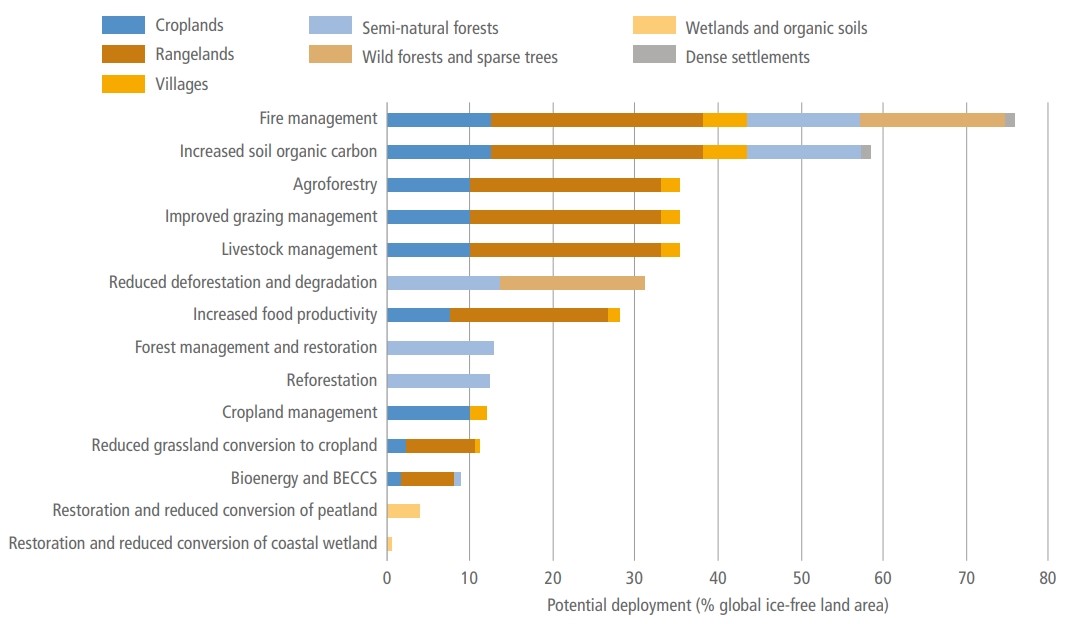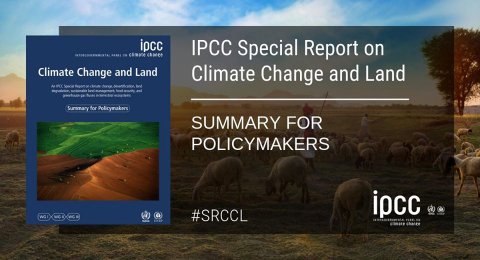Report by Rico Hübner
In November 2019, the IPCC published its final version of the Special Report on Climate Change and Land (SRCCL). The report focuses on the most relevant global developments in land use over time. The current state of knowledge on global warming and its impact on land use and other aspects, such as biodiversity, is reported to provide recommendations for solutions. Agroforestry plays an important role in the report – the term agroforestry appears 214 times – and is regarded as an important and promising option in the fight against the climate crisis and in adapting to its impacts.
The core messages of the IPCC Special Report:
Land systems play an important role in climate protection, for example through the preservation of ecosystems, opportunities for more sustainable agriculture and forestry, a more climate-friendly diet and the reduction of food waste.
- Around 23% of the anthropogenic greenhouse gases emitted worldwide originate from agriculture and forestry. In particular, deforestation and drainage of bogs leads to strong carbon dioxide emissions (13%), livestock farming and rice cultivation produce methane (44% converted into CO2 equivalents) and the use of mineral fertilisers produces laughing gas (82% converted into CO2 equivalents).
- The average overland temperature in the period 2006-2015 was 1.53°C higher than in the comparable period in "pre-industrial times" 1850-1900
- The average temperature in the land base is on average 0.66°C higher than the global mean temperature.
Since agriculture and forestry operate as part of the global greenhouse gas cycle, there is great potential for mitigation in improving management with a stronger focus on the contribution to climate change. At the same time, the opportunities for coping with the climate crisis in the land use sector must also be promoted.
The future role of agroforestry in the IPCC Special Report:
The climate change mitigation potential of agroforestry is rated "high", the adaptation potential even "very high" (p. 60). The annual global technical reduction potential, expressed in gigaton of CO2 equivalent, is estimated at 0.11 to 5.68 Gt CO2 equivalent yr-1, based on four studies (p. 48).
From the wide range, however, it becomes clear that there are still major uncertainties here. Nevertheless, the potential lies well above the researched figures for other suitable land-use related climate protection measures, such as the renaturation of moors, the renaturation of coastal wetlands, measures to accumulate carbon on pastureland, or silvicultural measures.
Agroforestry would be suitable for use on around 10% of the world's available land area for arable land and a further 20% for measures on pasture land, taking into account that the global food supply situation is not negatively affected (Fig. 1).
 |
|
Figure 1: Possible use of land management options for different land use types in the selection of management measures that only address local challenges and mitigate climate change and do not have major adverse impacts on global food security. (p. 63) |
The different mechanisms of action such as soil protection and carbon storage are assessed with "high probability": "Agroforestry practices and shelterbelts help reduce soil erosion and sequester carbon. Afforestation programmes aimed at creating windbreaks in the form of 'green walls' and 'green dams' can help stabilise and reduce dust storms, avert wind erosion, and serve as carbon sinks, particularly when done with locally adapted native and other climate resilient tree species (high confidence)." (p. 252)
According to the report's five impact categories, agroforestry performs very well in all categories (Fig. 2). The colour dark blue indicates the highest rating for the positive effects, e.g. that more than 3 Gt CO2-eq yr-1 are stored in the mitigation area. The letters indicate the confidence of the estimate: H = high, M = medium, L = low, whereby the agroforestry is rated "medium" in all categories except food security. In terms of costs, agroforestry is rated with one out of a maximum of three points, so that comparatively "low costs" are assumed.
 |
|
Figure 2: Potential global contribution of management options to mitigation, adaptation, combating desertification and soil degradation and improving food safety. (p. 64) |
In Section 4.8.1.3, the IPCC experts address the topic of agroforestry in more detail. There, they also state that, "Despite the many proven benefits, adoption of agroforestry has been low and slow" (p. 384). Section 5.5.1.3 deals in detail with the relationship between agroforestry and the emission and storage of greenhouse gases.












